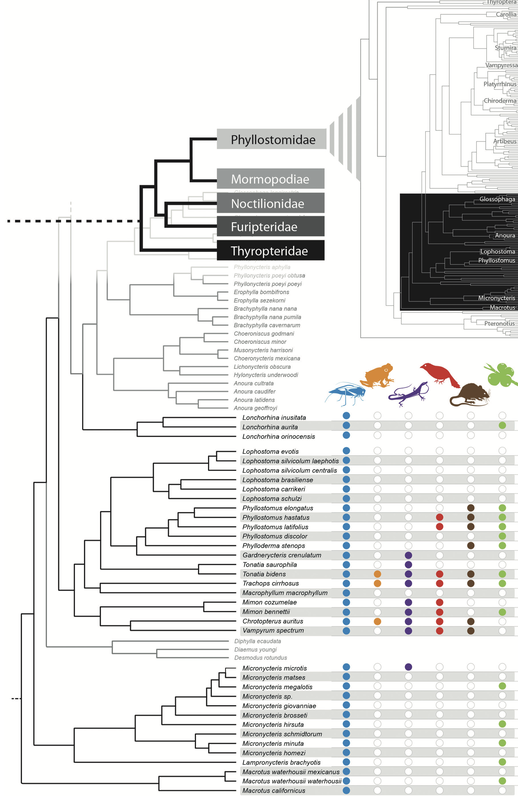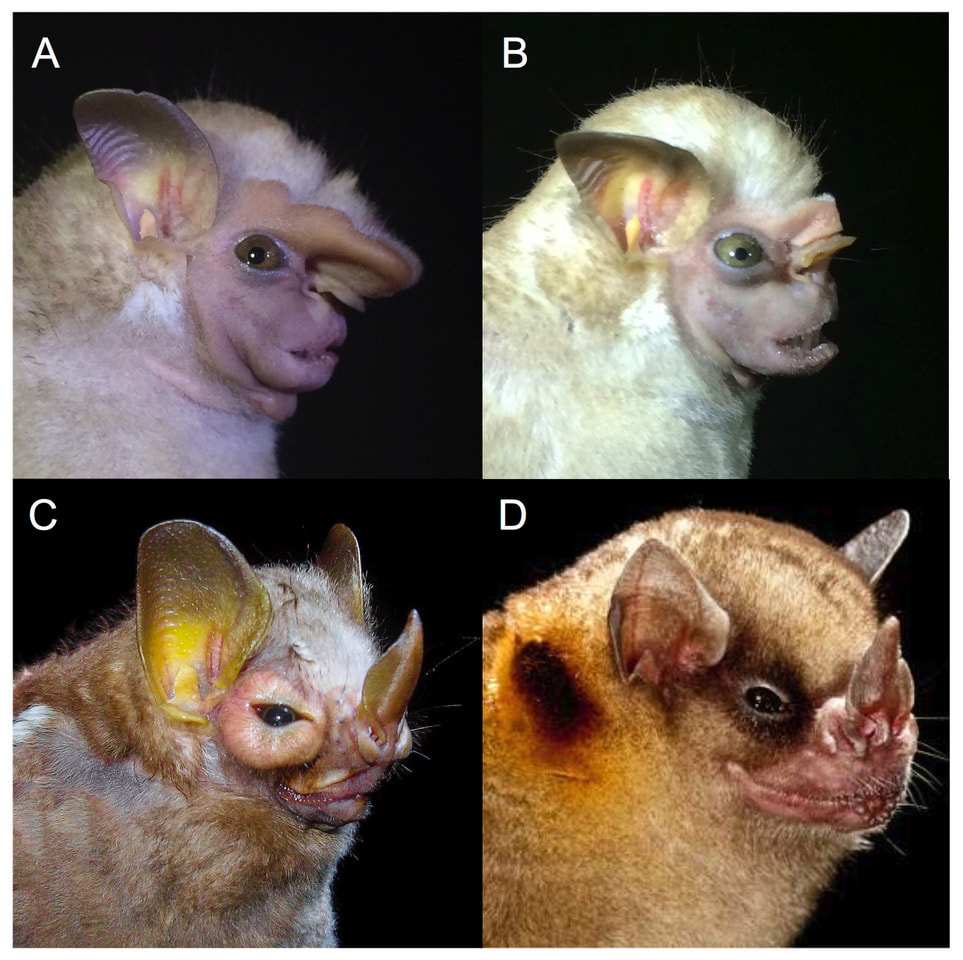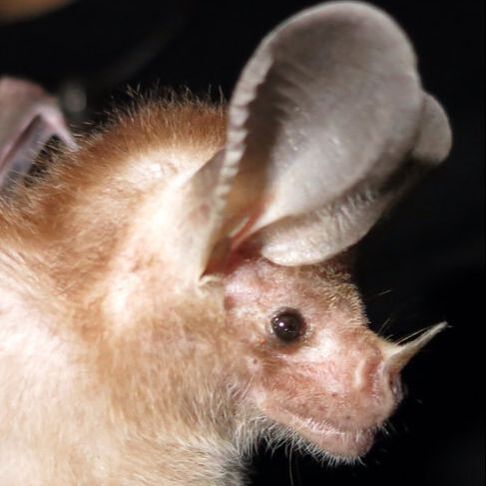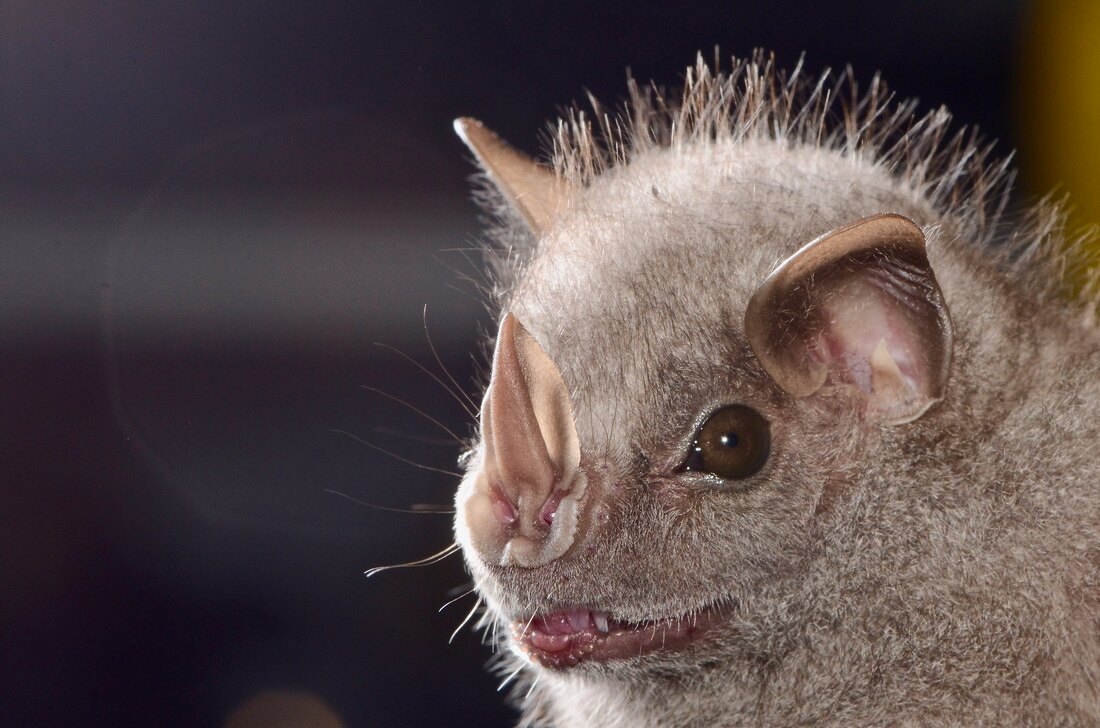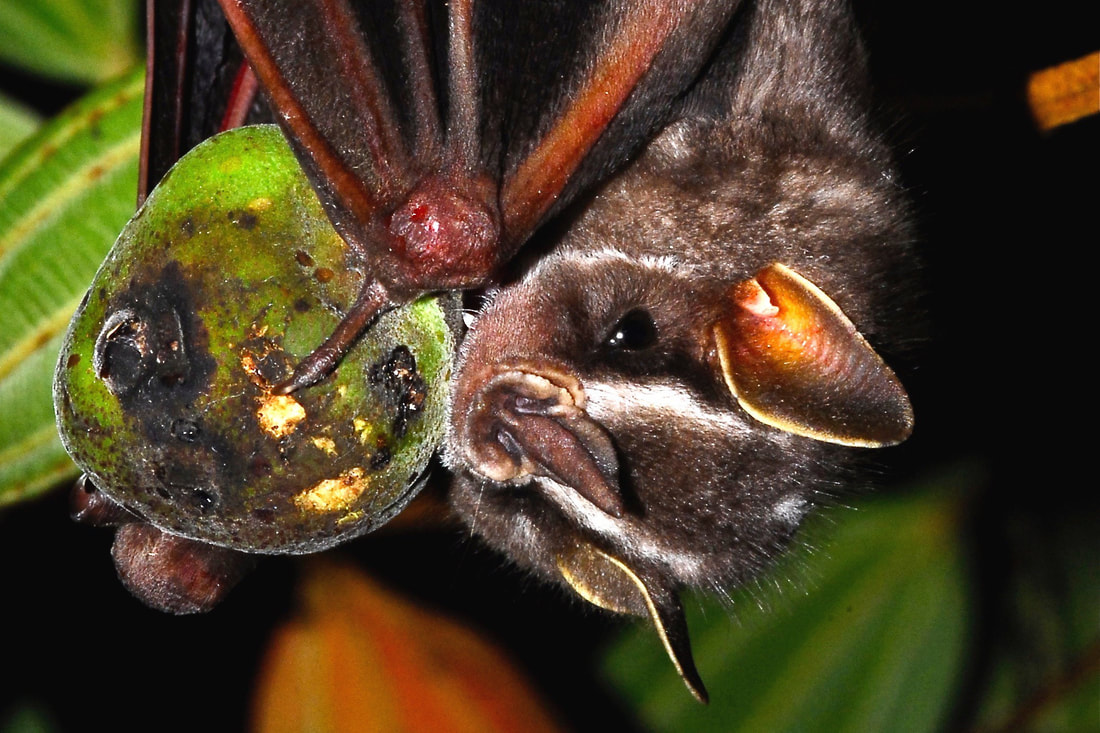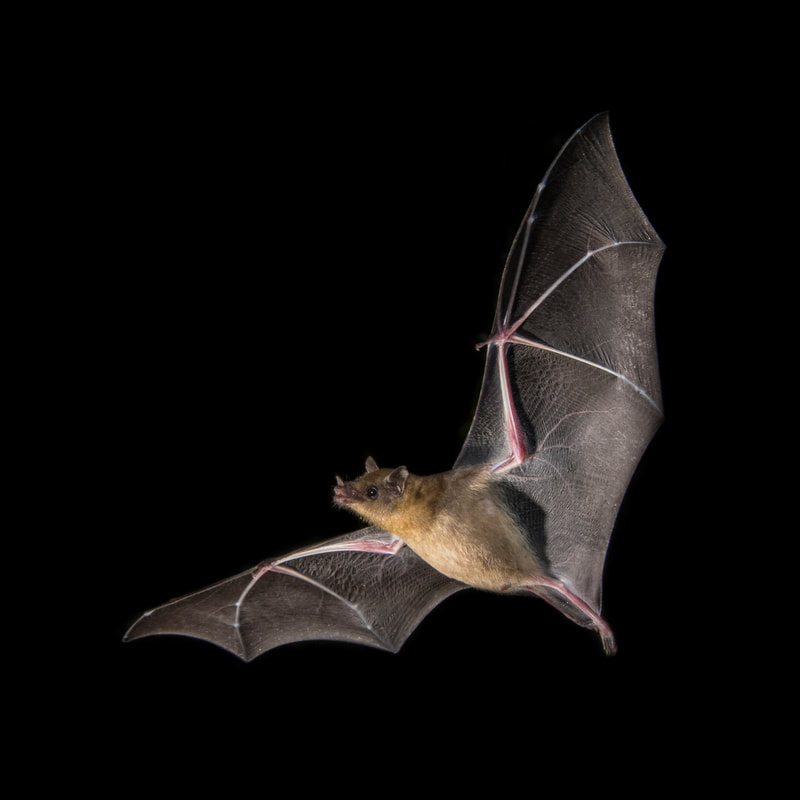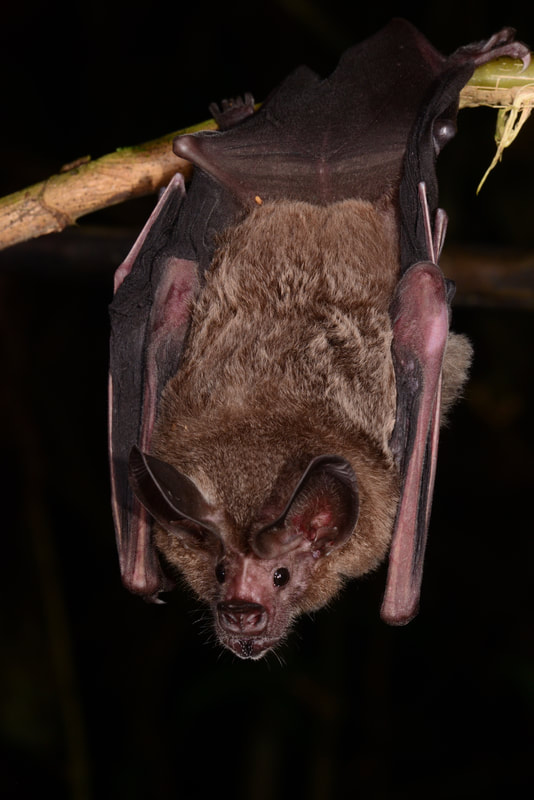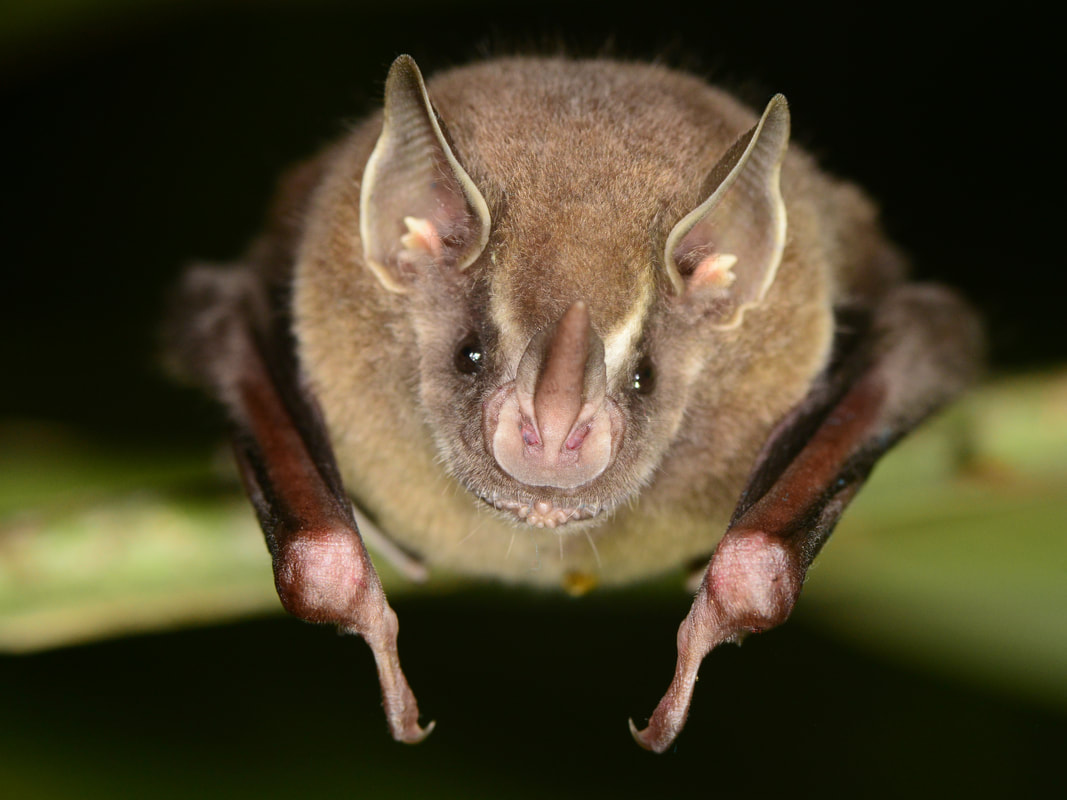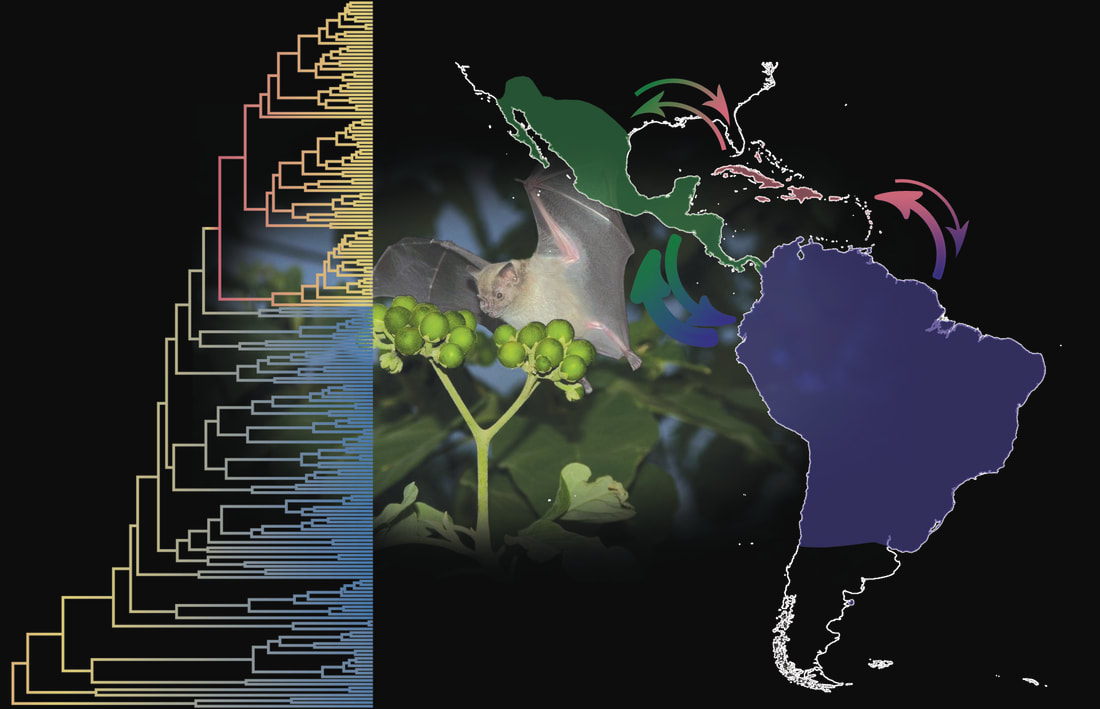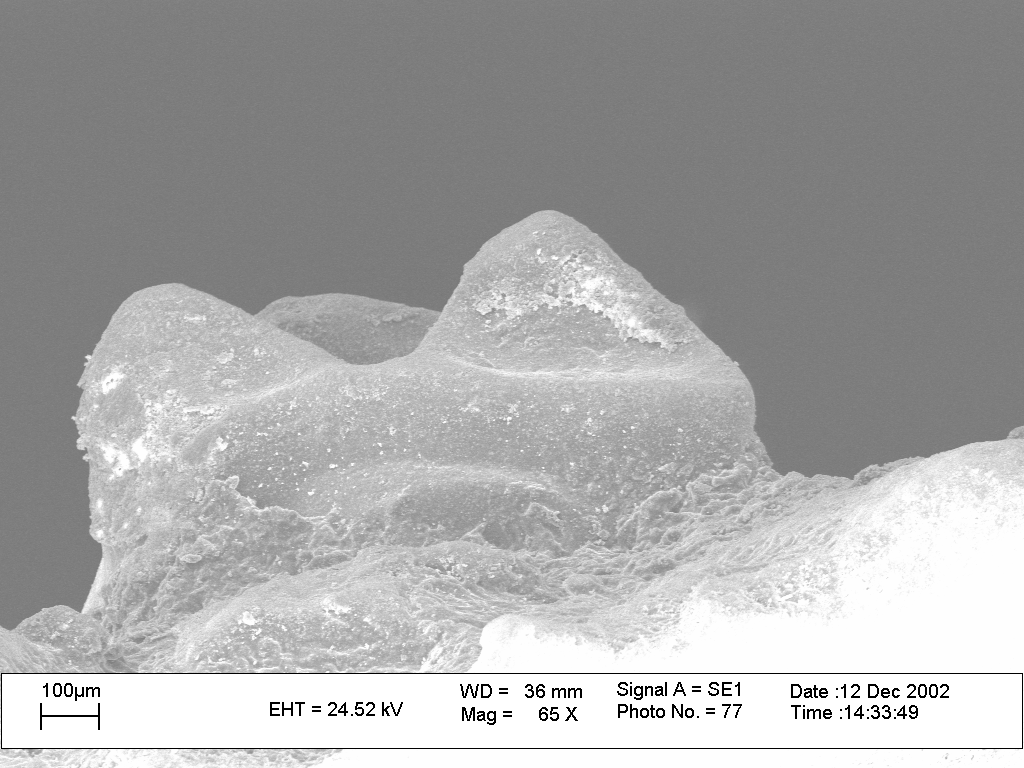Claire T. Hemingway, M. May Dixon, and Rachel A. Page Phyllostomid bats are known for their spectacular radiation into distinct dietary niches. But many phyllostomid species actually have quite generalized diets. Historically, these generalist phyllostomids fell within the subfamily Phyllostominae, a diverse group that primarily hunts insects and small vertebrates such as frogs, lizards, birds, rodents, and other species of bats. This now paraphyletic group consists of over 30 species. While this group is characterized by predators with broad, generalized diets, many of these bats have distinct, specialized foraging strategies. We discuss the apparent paradox of these generalist predators: bats that can be classified as dietary generalists, broadly overlapping with one another in the prey they consume, but often possessing quite specialized foraging adaptations and distinct behavioral strategies for prey finding. To untangle the puzzle of this understudied and historically elusive group of generalist predators, we examine the influences of diet breadth on hunting behavior, spatial distribution, conservation concern, and morphology.
0 Comments
Danielle M. Adams, Christopher Nicolay, and Gerald S. Wilkinson Of the 216 species of phyllostomid bats, fewer than 10% have had their mating systems studied in any great detail; however, some species exhibit mating systems ranging from apparent monogamy to extreme polygyny. Paternity studies reveal that the social mating system is generally indicative of the genetic mating system although in some cases, subordinate males father some offspring. These findings suggest that mate selection can involve both male competition and female choice. To estimate the strength of precopulatory and postcopulatory sexual selection, we use measures of sexual dimorphism in relative body mass and canine length as indicators of direct male competition, and relative testes mass as a proxy for sperm competition. We then evaluate the influence of aggregation size and permanence of the roosting structure on the intensity of sexual selection using phylogenetically-informed analyses. Even though females are often larger than males, male-biased sexual dimorphism for relative mass and canine length is widespread and associated with large roosting aggregations. In contrast, sperm competition is greatest in species with intermediate-sized aggregations. These patterns of sexual dimorphism are largely consistent with what is known about phyllostomid mating systems, but exceptions provide potential opportunities for future study.
Robert M. R. Barclay and Theodore H. Fleming The morphological, ecological and behavioral diversity found among the Phyllostomidae might be expected to be associated with variation in reproductive patterns and life history traits. Using data from the primary literature for 71 species, we summarize reproductive and life history variation in this family and test predictions based on life history theory. The expectation for variation is at least partly supported. Monestry, seasonal (bimodal) polyestry, and aseasonal polyestry occur, with larger species, island species or populations, and animalivorous species being most likely to be monestrus. Litter size is universally one, however. As in other bats, phyllostomids have a “slow” life history with late maturity, one offspring per litter, and long lives for their size. Females produce relatively large offspring at birth (mean = 28% of adult mass), although relative size declines with adult mass. Young are dependent on their mother until they are almost full size at the time of weaning. Unfortunately, there is a paucity of data for many other life history traits and this precludes in-depth analyses of patterns and factors associated with variation. Many interesting evolutionary questions remain to be addressed and the variation in other aspects of the family make phyllostomids ideal subjects to test general questions regarding the evolution of reproductive and life history traits of mammals.
Jeneni Thiagavel, Signe Brinkløv, Inga Geipel, and John M. Ratcliffe Bats (order Chiroptera) exhibit wide-ranging differences in foraging ecology, morphology and behavior that often reflect the demands on their sensory systems. New World leaf-nosed bats (family Phyllostomidae) have a wide spectrum of feeding ecologies and sensory system specializations. The family consists of bats that are primarily nectarivorous (e.g., subfamily Glossophaginae), frugivorous (e.g., Stenodermatinae, Carolliinae), sanguivorous (Desmodontinae), and predatory (Phyllostominae). Phyllostomid brains typically have more balanced visual, olfactory, and auditory regions in relative size compared with other bat families. Within phyllostomid subfamilies, relative brain region volumes reflect feeding ecology and corresponding sensory specializations. For instance, phytophagous phyllostomids have larger visual and olfactory regions relative to predatory species, which in turn have larger auditory centers. This chapter uses this bat family to illustrate the influences that foraging ecology and diet selection have on the evolution of sensory systems and relative brain and brain region volumes. The diversity within this family makes it an excellent model group among bats - and mammals in general - from which to better understand sensory specializations, cognitive development, and brain evolution.
Ariovaldo P. Cruz-Neto and L. Gerardo Herrera M. Dietary diversification is one of the main drivers of physiological diversification in Phyllostomidae. We analyzed the extent to which dietary diversification in phyllostomids is paralleled by diversification in whole-organism physiological traits that are essential to understanding how they interact with their environment. We focused our analysis on the interplay between diet and digestive, excretory, and metabolic physiology. We used a strict phylogenetic approach to test the relationship of these traits with diet when sufficient information for phyllostomids representative of different feeding habits was available: activity of intestinal enzymes, kidney morphology, urine concentration, and basal metabolic rate. For traits for which data are scarce or restricted to some trophic guilds, we reviewed the information available in the literature. Our analysis reveals that certain physiological traits appear to be associated with diet in an evolutionary and ecological context. Other traits seem not to be related to diet. Besides the difficulties associated with diet quantification, one potential problem with comparative analyses of the association between diet and physiological traits in phyllostomids is the paucity of data for animalivores. Future comparative work should include under-represented dietary habits and consider the use of methodological approaches currently used in the study of other vertebrates.
Sharon M. Swartz and Justine J. Allen Understanding the evolution of bat flight behavior and explaining the diversity in the structure of their wings requires examination of the functional organization and mechanical properties of wing tissues. In-depth structural analyses that consider multiple levels of organization can complement phylogenetically-based comparative analyses, even if they do not sample a large number of taxa. In this chapter, we discuss recent research on the functional biology of bat flight and wing structure that has used phyllostomids as study taxa, with attention to skin morphology, muscle function kinematics, and aerodynamics. We discuss how understanding the hierarchical structure of the architecture of wing tissues, particularly intramembranous muscle, elastin fiber bundles, and collagenous structures, can provide a window into the functional dynamics of phyllostomid wings. We offer thoughts concerning differences in wing structure and flight capabilities among phyllostomids and other groups of bats, and propose future research to explore these subjects in greater depth.
Norberto P. Giannini, Lucila I. Amador, and R. Leticia Moyers Arévalo Body mass is the single most important factor affecting the biology of animals. Small size is generally highly favorable for flying vertebrates; in addition to this constraint, echolocating bats are also restricted by the physics of call parameters. However, we find in a single group, the Noctilionoidea, virtually the entire size range found across all echolocating bats. Here we examine the evolutionary significance of this variation. We explore how the reconstructed body mass of the ancestral phyllostomid was inherited from noctilionoid ancestors, how size changed along the branches of the phyllostomid tree, and how size co-varied with characteristic evolutionary shifts in the ecology of phyllostomid bats. We found little change along the backbone of the phylogenetic tree and across major dietary transitions, many scattered increases and decreases of variable magnitude, and most variation concentrated in phyletic change in a few groups, especially vertebrate-specialized and frugivorous phyllostomids. These trends imply sustained selection acting over millions of years in a consistent direction, principally towards an increase in size. Initial stasis may have facilitated ecological transitions, while capacity for size change may have fueled intense directional selection within highly specialized lineages. Finally, diverging trends appear to reflect past character displacement.
Liliana M. Dávalos, Andrea L. Cirranello, Elizabeth R. Dumont, Stephen J. Rossiter, and Danny Rojas A diversity of cranial phenotypes and feeding ecologies characterizes phyllostomid bats. However, many subfamilies share a similar insect-feeding morphotype, apparently stable over millions of generations. Is the diversity of phyllostomid traits adaptive, and does it contribute to species diversity in the family? We evaluate predictions from Simpson’s ecological theory of adaptive radiation, applied to comparative trait analyses since 2000. The shift to higher rates of taxonomic diversification at the base of Stenodermatinae, new skull architecture capable of great bite force despite small size, and a distinctive olfactory receptor profile make this subfamily a radiation by itself. The stenodermatine skull architecture also enables making leaf tents, a new roost adaptive zone that contributes to the diversity of this subfamily. The evolution of distinct trophic adaptive zones characterized by optima in cranial musculature and mechanical advantage shows that stenodermatines are not the only phyllostomid lineage responding to ecological opportunities. Instead, nectarivores have unique cranial traits and occupy their own trophic adaptive zone, while a subset of insectivores together with sanguivores share a similarly high trophic level. There is also evidence of convergent and adaptive evolution in cranial traits associated with similar trophic levels, as well as adaptations coupled with dietary specialization in digestive and renal function. While linked to higher rates of taxonomic diversification only among stenodermatines, these various adaptations demonstrate the response of phenotypic form to diverse ecological function that makes phyllostomid bats unique.
Liliana M. Dávalos, Paúl M. Velazco, and Danny Rojas Traditionally, the phylogeny of phyllostomids contained a few subfamilies sharing similar cranial and ecological traits. Family-wide genetic sequence data starting in the early 2000s, however, showed that this phylogeny obscured the taxonomy, biogeography, and evolution of ecological traits in the family. Current phylogenies strongly support the monophyly of 11 subfamilies, as well as most relationships among them. Nonetheless, the positions of several key groups are not well-supported and require further analyses, including: 1) Micronycterinae relative to Desmodontinae, 2) Lonchorhininae, and 3) the genus-level resolution of Miocene fossils. Historical biogeographic analyses have revealed a South American origin for most subfamilies; have inferred widespread and multi-continental distributions for ancient ancestors; and have rejected a special influence of Quaternary glaciations on recent speciation. These analyses have also confirmed North and Central America, as well as South America, as independent centers of diversification for some subfamilies (e.g., Macrotinae), as well as within subfamilies (e.g., Glossophaginae). These parallel centers of diversity might result from the absence of continuous dry habitat corridors between the continents, but this hypothesis has not been tested using phyloclimatic methods. Biogeographic analyses of individual genera have demonstrated the importance of the Andes for diversification in Platyrrhinus, Sturnira, and Uroderma, as well as the critical role of humid forest corridors between Central and South America for the long-term dispersal of these lineages.
Nancy B. Simmons, Gregg F. Gunnell, and Nicolas J. Czaplewski Phyllostomids arguably are the most ecologically diverse family of extant mammals, and the pattern, tempo, and mode of their evolution is of great interest to biologists. While modern molecular phylogenetic studies can provide a framework for understanding relationships of phyllostomids to one another and their close relatives, it is only the fossil record that can provide calibration points for reconstructing the temporal pattern of diversification. Additionally, the fossil record can facilitate synthetic understanding of patterns of morphological change over time. The fossil record of Phyllostomidae definitely extends to the early Miocene (~ 21-19 Ma) of Panama, and may extend as far back as the late middle Eocene (~41 Ma) of Peru, but it is surprisingly incomplete before the Pleistocene. Crown group members of the extant subfamilies Phyllostominae and Lonchophyllinae are known from Miocene localities in the Neotropics. Most Miocene phyllostomids exhibit dental morphology and body sizes suggesting that they were insectivores, but some may have been at least partially carnivorous or omnivorous, indicating that ecological diversification in the family was well underway in the Miocene. Large numbers of phyllostomid fossils are known from Pleistocene and Holocene deposits in Central America, South America, and the Caribbean, but no Late Miocene or Pliocene fossil phyllostomids are known, hence there is a ~10 million year gap in the fossil record. There are relatively few documented extinctions in the group, but those that are known disproportionally seem to have affected Antillean taxa and vampire bats (Desmodontinae). It is not yet clear if these represent real patterns or are a result of paucity of the fossil record for Phyllostomidae.
|
Meet the editors!
Theodore H. Fleming, Liliana M. Dávalos, & Marco A. R. Mello Keywords
All
|
